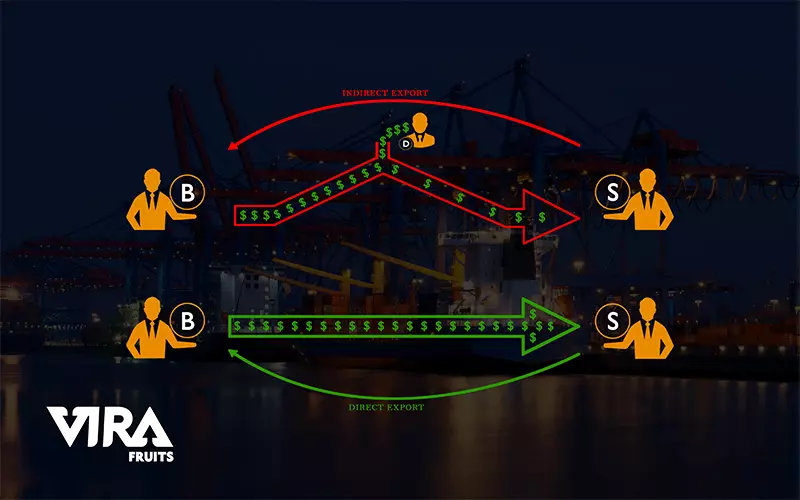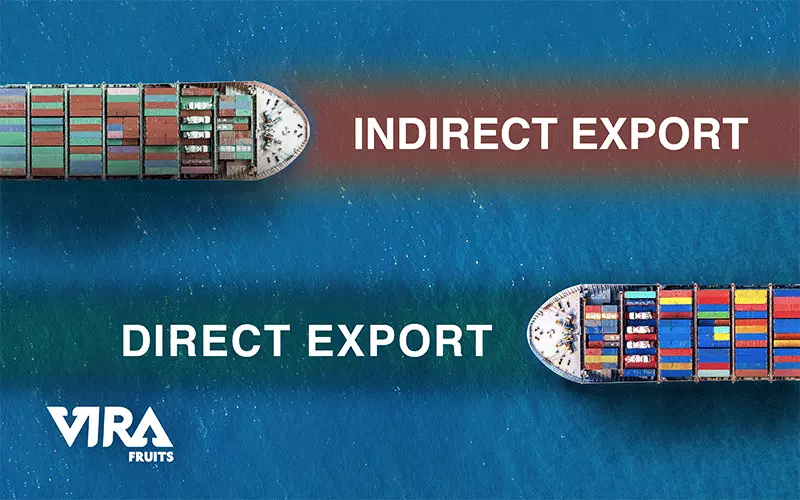To answer what is direct export, we have to begin with a definition and then go through some examples. Quite simply, direct export refers to sales made by an exporter directly to an importer located abroad, without alternative organizations or individuals to facilitate the transaction. It is the responsibility of the exporter to handle sales, logistics of shipment, foreign distribution, and payment collection.
There are many products and services that are suitable for direct export if you have a service you can provide from abroad, if you have goods that do not require local installation and have low shipping costs, or if your goods are so expensive that someone can personally deliver and install them for you.
This type of export, indirect exports, involves selling to an intermediary, who in turn sells the goods to wholesalers or supermarkets who will purchase them directly. Exporters could also sell their products directly to buyers through local intermediaries, such as export trading companies and export management companies. Exports of Iranian apple is a good example of this type of export.
Through indirect exports, payment from the foreign customer is almost never collected, nor is logistics coordination coordinated. It will save you the time and effort of setting up the organization and processes. An indirect export is usually the best route to market for small and medium companies, at least when it comes to markets overseas where there may be differences in culture, language and time zones.
Direct Exporting, for example, is an E-Commerce export that is a B2C export. It is received directly by the customer. On the other hand, in the case of, for example, exporting a container full of vegetables to other countries, the receiver will be an importer who has to sell the product in the retail market. This is called indirect exports.

The advantages of direct exporting
The top advantages of direct exporting are:
- Profits are increased because you eliminate intermediaries
- You are in direct control of every aspect of the transaction
- You recognize your customers well
- Directly dealing with you will increase the level of trust your customers have in you.
- By meeting directly with the customer responsible for selling your product, your business trips are substantially more efficient and effective.
The disadvantages of direct exporting
These are the top disadvantages of direct exporting, which may result in deciding not to export directly:
- It may require a lot of your time, energy, and money.
- Customer maintenance requires more manpower.
- Every employee of your company will have more responsibilities to fulfill as part of serving the business.
- It is your responsibility to handle whatever happens.
- The customer communications might not be handled as quickly as if you were a local agent

What are the differences between direct and indirect exports?
So far, the difference in having control in the process of either directly or indirectly has been made clear. But there are differences in many other aspects of these two processes that we are going to mention here.
- The external agencies are the major source of inputs required for successful export executions if you have zero experience in exporting. Having involved themselves full-time in export and import activities, export intermediaries have considerable experience and specialized knowledge. Thus, they can be contacted if technical advice is needed. So you have to depend and count on them. As a result, if you are not an expert in this field, it is better and recommended to have indirect exports instead of indirect.
- Every aspect of the risk must be personally assumed by the direct exporter. But in indirect exports, export agencies will be liable for all risks after goods are shipped.
- Direct exporters deal directly with foreign customers. He will benefit from this in order to earn the trust of the overseas market. On the other hand, in indirect exports, the exporter can’t gain a reputation in the overseas market since the original exporter outsources the same to a number of export agencies.
- Manufacturers who wish to export directly need to invest in the establishment of an overseas network and building the necessary export infrastructure. While investing in export infrastructure is not necessary. A company that exports intermediaries will already have the infrastructure and a network in place.
